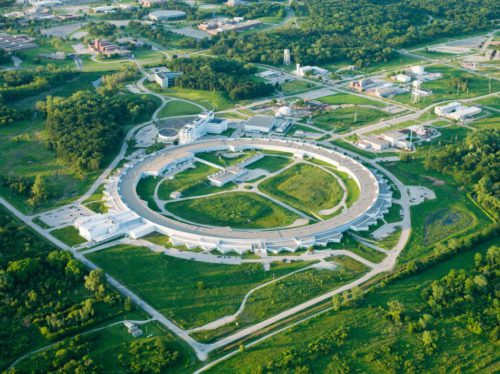
CBI has invited Electric Applications Incorporated to join our guest blog series to share insight into the exciting lead battery research underway at Argonne National Laboratory. Don Karner, President of EAI, who manages the project on behalf of a research consortium made up of North America’s lead battery industry, writes about the importance of fundamental scientific research programs. CBI’s Technical Roadmap identifies priority research goals to enhance lead battery performance in order to meet future demand and the project at Argonne is an example of one of the research projects delivering an in-depth understanding of lead batteries to achieve these goals.
The Lead Battery Science Research Program (LBSRP) is a pre-competitive research consortium bringing together more than 90% of North America’s lead battery industry. Consisting of lead battery manufacturers and industry suppliers, LBSRP members are at the forefront of research and innovation into performance improvements for lead battery technology. As demand for advanced batteries continues to increase across a range of applications, from automotive and industrial to energy storage, fundamental scientific research programs are vital. Members of the group include:
The LBSRP conducts research work at the US Department of Energy’s Argonne National Laboratory (ANL) under a Cooperative Research and Development Agreement managed Electric Applications Incorporated. The resources of the national laboratory system provide the capability to perform basic and applied research into the electrochemical processes inherent in operation of a lead battery, that is beyond the capability and the resources of any single lead battery manufacturer. A better understanding of these processes will ultimately provide the consortium’s members the pre-competitive scientific insights to help make significant product improvements in key performance areas such as Cycle Life, Partial State of Charge Cycling and Dynamic Charge Acceptance. All of these key areas of battery enhancements will facilitate better batteries for use in vehicles, utility and renewable energy storage, and the motive power industry. The work from the LBSRP is aimed at improving greenhouse gas reductions offered by micro-hybrids using lead batteries, with the cycle life increases positively impacting lead battery performance for energy storage system (ESS) applications.

In the second year of a three-year program, LBSRP research work is conducted at ANL by its Chemical Sciences and Engineering division (CSE) and by its Material Sciences division (MSD).
Research work by the CSE division at ANL is led by Principal Investigator Tim Fister and utilizes the ANL Advanced Photon Source (APS). The APS is a national synchrotron-radiation light source research facility funded by the United States Department of Energy Office of Science. Using high-brilliance X-ray beams from the APS it has been possible to study the precipitation and dissolution of lead sulfate crystals on working Plante negative electrodes. Recent work has progressed to more complex pasted electrodes; by utilizing a small specifically designed lead test cell it has been possible to study the in-operando phase and crystallographic changes on both electrodes during formation and subsequent cycling.
The APS provides a unique capability to trace the electrochemical reactions in an operating lead battery cell, providing insights into parameters affecting battery operation that have never before been visible in a working cell. Additional advanced techniques, such as tomography, are also being successfully applied to study lead working electrodes. Research work by the MSD division at ANL is led by Principal Investigator Vojislav Stamenkovic exploring the basic science of lead battery operation using the Advanced Materials Laboratory at ANL. Under the laboratory direction of Pietro Papa Lopes, MSD experimental work has focused on cyclic voltammetry and in-situ ICP testing of very high purity Plante negatives and the influence of additives to the negative electrode active materials. Recent work is investigating the role of carbon in the negative electrode by studying the electrochemical processes on glassy carbon electrodes.

Consortium member scientists and engineers regularly meet to review and debate technical progress, agree on significant findings and provide future direction for the research program. This level of pre-competitive technical co-operation between companies competing in the marketplace has been critical to the success of the LBSRP. Future research performed by the LBSRP will build on this pre-competitive cooperation and will focus on developing a fundamental understanding of lead battery electrochemical processes under a range of operating conditions and influences from various additives. Mathematical modelling of these processes will ultimately provide design tools for LBSRP members to improve the design and operation of their battery products.
Demand for batteries shows no sign of decreasing, as the transition to a future focused on clean mobility and clean energy increases the need for high-performing, sustainable and reliable batteries. The work of this Consortium is driving forward enhancements in lead battery technology to meet global decarbonization and electrification ambitions.
